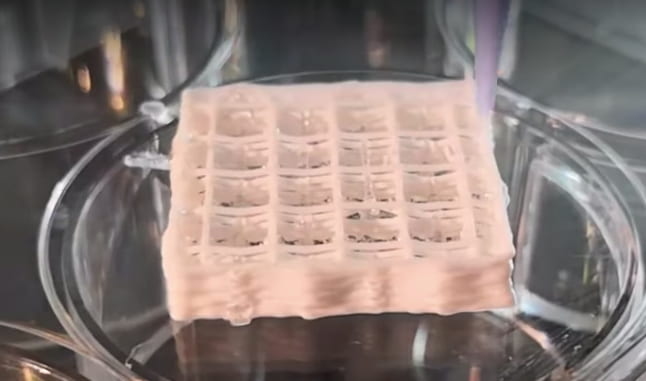At the University Hospital of Dresden Technical University, Germany, scientists have been bio-printing bone and skin samples upside down.
Their work is part of the European Space Agency’s 3D Printing of Living Tissue for Space Exploration project and the aim is to determine whether 3D printing is a viable option for low-gravity environments such as Mars.
The scientists’ experiments worked and they were able to print a skin sample using bio-ink that had an increased viscosity ensuring it doesn’t fly away.
“Producing the bone sample involved printing human stem cells with a similar bio-ink composition, with the addition of a calcium phosphate bone cement as a structure-supporting material, which is subsequently absorbed during the growth phase,” said Nieves Cubo, a bioprinting specialist at the university.
Equipping Astronauts with Bio-Printers
The ESA is also working on providing astronauts with surgical facilities to ensure they can treat any injuries that occur during long missions.
“Carrying enough medical supplies for all possible eventualities would be impossible in the limited space and mass of a spacecraft,” explains Tommaso Ghidini, head of ESA’s Structures, Mechanisms and Materials division. “Instead, a 3D bioprinting capability will let them respond to medical emergencies as they arise.”
Another major benefit of bio-printing bone and skin includes a reduced risk of rejection as astronauts’ own cells are used to create the raw printing materials.
Source: CNET

License: The text of "Scientists Bio-Printing Human Skin and Bone for Space Missions" by All3DP is licensed under a Creative Commons Attribution 4.0 International License.